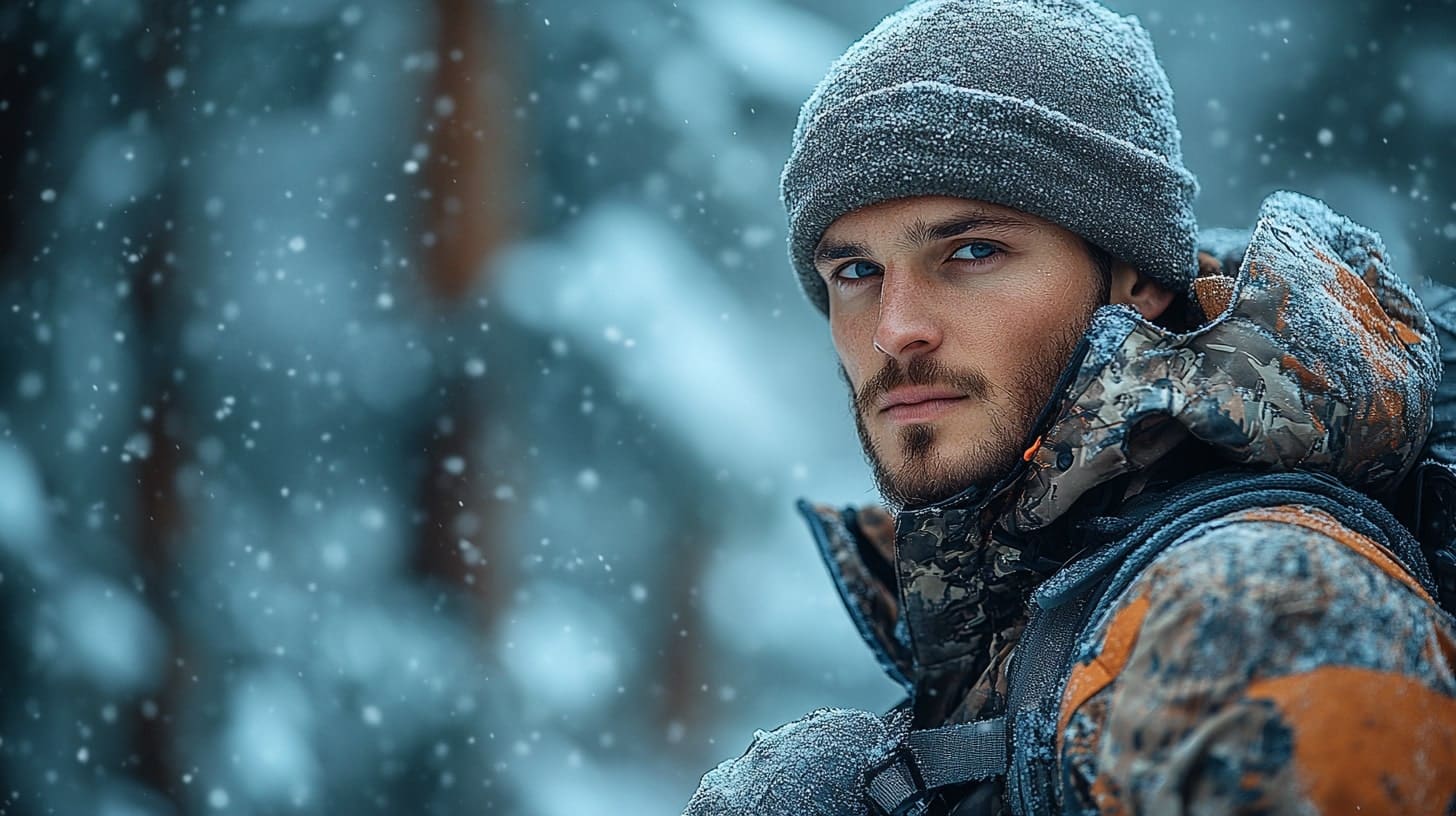
The Ultimate Guide to Winter Hunting Clothing
Jeffrey Wilkinson
- 0
- 1130
Hunting in the winter presents its own unique set of challenges. The biting cold, unpredictable weather, and icy terrain require proper preparation, and choosing the right clothing can make or break your experience. Staying warm, dry, and silent while maintaining mobility is essential for success. In this comprehensive guide, we’ll cover everything you need to know about selecting the best winter hunting clothing to ensure comfort, safety, and efficiency.
Why Winter Hunting Clothing Matters
Winter hunting clothing is about more than just staying warm—it’s about enhancing your performance. Proper gear not only protects you from frostbite and hypothermia but also keeps you agile and camouflaged in snowy landscapes. Without the right clothing, you risk discomfort, reduced focus, and even dangerous exposure to extreme weather.
The Key Components of Winter Hunting Gear
1. Base Layers: The Foundation of Warmth
Base layers are your first line of defense against the cold. They are designed to wick moisture away from your skin, keeping you dry and comfortable.
- Materials to Look For: Merino wool and synthetic fabrics like polyester are ideal for base layers. They provide insulation while effectively managing sweat.
- Fit: Choose snug-fitting base layers that allow for flexibility without feeling restrictive.
2. Insulating Layers: Retain Body Heat
The insulating layer traps body heat and provides the warmth needed for long hours in freezing conditions.
- Materials: Down, fleece, and synthetic insulation are common choices. Down offers excellent warmth-to-weight ratio, while fleece is lightweight and breathable.
- Key Features: Look for layers that are easy to remove or add as the temperature changes throughout the day.
3. Outer Layers: Protection from the Elements
Your outer layer shields you from wind, snow, and rain. It should be waterproof, windproof, and durable.
- Materials: GORE-TEX, eVent, or other high-performance fabrics offer excellent weather resistance.
- Quietness: Opt for soft, quiet materials to avoid scaring off game.
Additional Winter Hunting Clothing Essentials
Gloves
Cold hands can ruin your hunting experience. Invest in insulated, waterproof gloves with a good grip. For precision tasks, consider gloves with touch-screen-compatible fingertips or removable liners.
Hats and Balaclavas
A significant portion of body heat is lost through the head. A warm hat or balaclava will keep you insulated while providing camouflage.
Socks and Boots
Cold feet can be both uncomfortable and dangerous. Choose moisture-wicking wool socks paired with insulated, waterproof boots designed for extreme cold. Boots with a rubber shell and deep treads are excellent for icy conditions.
Gaiters
Gaiters protect your lower legs from snow and moisture, ensuring your boots stay dry and warm. They are especially useful when trekking through deep snow.
Choosing the Right Materials
Merino Wool
Soft, moisture-wicking, and odor-resistant, merino wool is an excellent choice for base layers and socks.
Synthetic Insulation
Lightweight and quick-drying, synthetic materials like Thinsulate provide reliable warmth even in damp conditions.
Down Insulation
Known for its superior warmth, down is perfect for extremely cold conditions. However, it loses its insulating properties when wet, so pair it with a waterproof outer layer.
GORE-TEX
This high-performance material is a popular choice for waterproof and windproof outer layers. It’s breathable, ensuring you stay dry from both external moisture and internal perspiration.
Layering: A Proven Strategy for Winter Hunts
The key to staying warm and comfortable during a winter hunt is layering your clothing. This approach allows you to adapt to changing temperatures and activity levels.
- Start with the Base Layer: A snug-fitting thermal shirt and pants will wick away sweat and keep you dry.
- Add an Insulating Layer: A fleece jacket or down vest retains body heat and provides warmth.
- Top with an Outer Layer: A waterproof and windproof jacket and pants protect you from the elements.
- Accessorize Smartly: Include gloves, a hat, and a scarf or neck gaiter to cover exposed areas.
Tips for Buying Winter Hunting Clothing
- Invest in Quality: Durable, high-quality clothing may cost more upfront but will save you money in the long run.
- Prioritize Fit: Ill-fitting clothes can hinder movement and reduce effectiveness. Ensure layers fit well without being too tight or too loose.
- Test Before the Hunt: Wear your full outfit on a practice hike or similar activity to ensure comfort and functionality.
- Look for Camo Patterns: Choose patterns that blend into your hunting environment, whether it’s snowy woods or open plains.
Maintaining Your Winter Hunting Gear
To extend the life of your clothing, proper maintenance is crucial:
- Wash According to Instructions: Use mild detergents and avoid fabric softeners, which can damage performance fabrics.
- Dry Thoroughly: Always let your gear dry completely before storing it to prevent mold or odor.
- Store Properly: Keep your hunting clothing in a dry, ventilated area, away from direct sunlight.
Safety Considerations
While staying warm is essential, safety should never be overlooked. Bright orange vests or hats ensure visibility to other hunters without compromising your safety. Always check local hunting regulations for required safety gear.
Conclusion
Winter hunting is a challenging but rewarding experience that demands the right clothing to stay warm, comfortable, and prepared. By investing in high-quality layers, choosing appropriate materials, and maintaining your gear, you’ll be ready to face the harshest conditions. With the right preparation and attire, you can focus on the thrill of the hunt and make lasting memories in the great outdoors.

